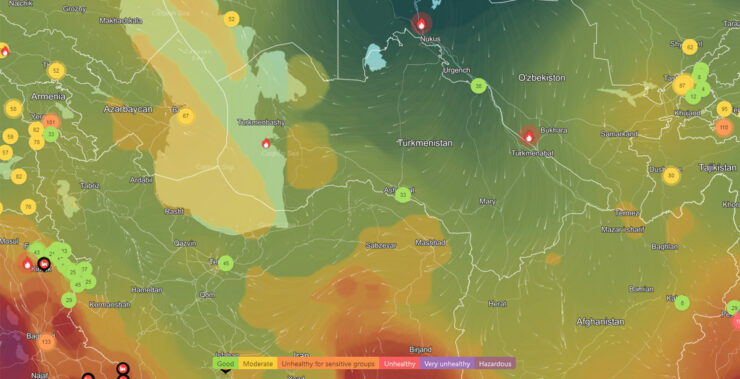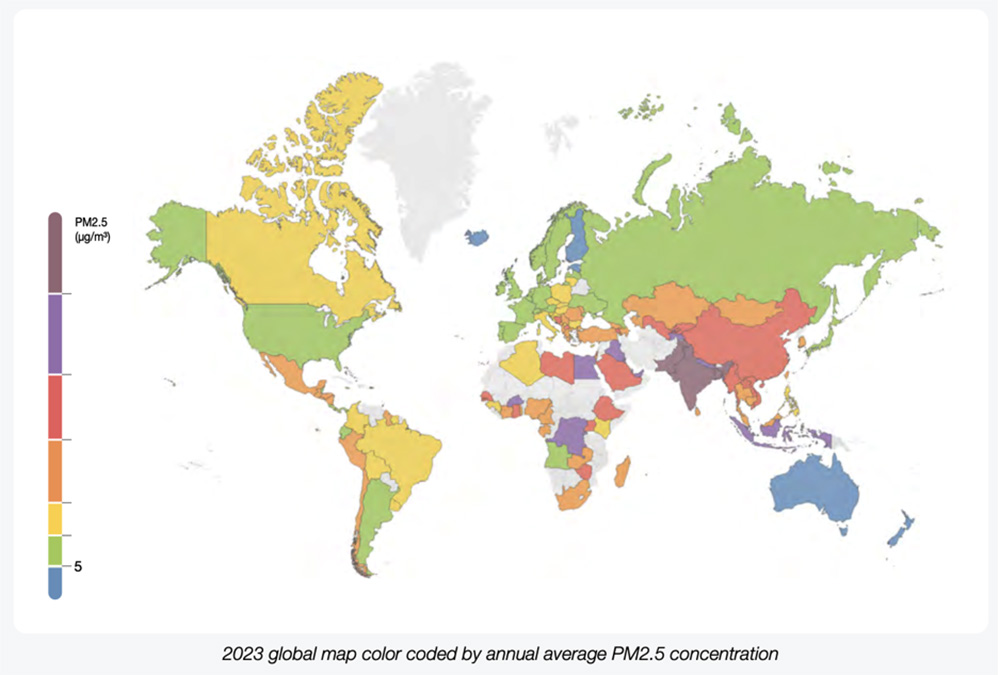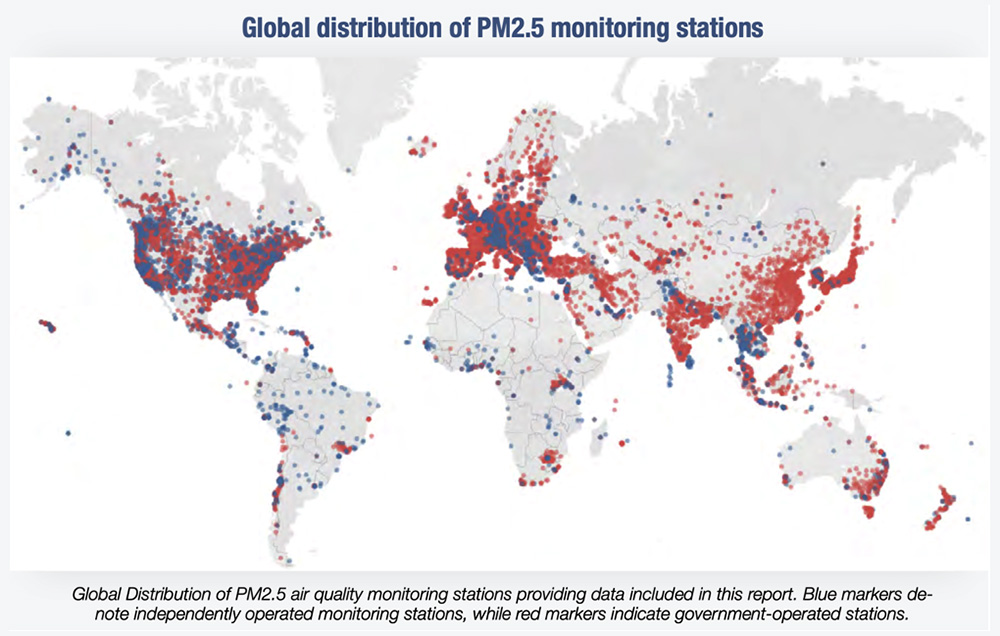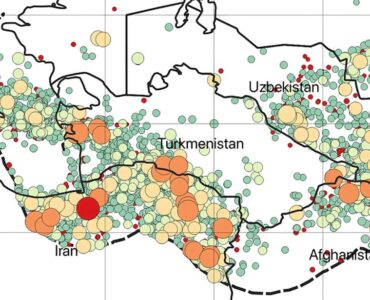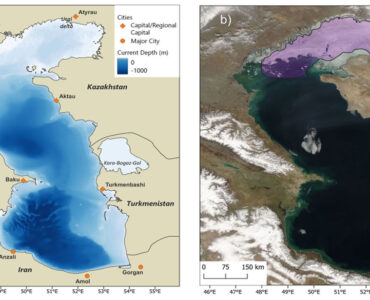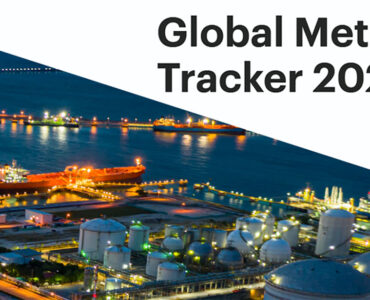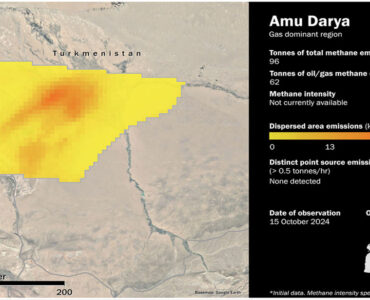A Swiss air quality technology company IQAir has released its annual World Air Quality Report for 2023. The report is compiled using data from more than 30 thousand air quality monitoring stations across 7812 locations around the world.
According to the report, 129 out of 134 countries and regions exceeded the air quality guideline by the World Health Organization (WHO) for PM2.5 concentrations (less than 5 µg/m3 annual average). PM2.5 is a fine particulate matter with 2.5 micrometers in diameter or less and is a key component of air pollution. Exposure to high levels of PM2.5 has been associated with premature mortality, increased respiratory symptoms, cardiovascular diseases.
The report uses a color code to visualize the extent to which annual PM2.5 concentrations exceed the WHO guidelines. As seen in Figure 1, Uzbekistan, Kyrgyzstan, Kazakhstan, and Tajikistan have all higher concentration rates of PM2.5 than recommended, while the data on Turkmenistan is missing.
Figure 1. Global map with average PM2.5 concentrations. Source: IQAir.
While the number of air quality monitoring stations from which IQAir gets its data varies, there seem to be no stations in Turkmenistan, as seen in Figure 2.
Figure 2. Air quality monitoring stations that provide data for IQAir. Source: IQAir.
While the data for Turkmenistan is not directly available, there is one station in close proximity to Turkmenistan border in Xorazm, Uzbekistan, where an annual average PM2.5 concentration was 16.5 µg/m3 in 2023 and 37.2 µg/m3 a year earlier. The air pollution rates are likely similar on the Turkmen side of the border as well.
Additionally, the IQAir website reports real-time air pollution levels in Ashgabat from a station operated by the U.S. Department of State. According to the website, PM2.5 concentrations have been varying from 9.3 µg/m3 to 86.7 µg/m3 in the period of 12-24 March, 2024.
In a separate analysis, IQAir reports that in 2020, the air quality in Ashgabat was rated as “moderate” with 12.1-35.4 µg/m3 PM2.5 levels during 10 months of the year, while two months of 2020 were rated as “good”. The best month in that year is reported to be May, while the worst was December. However, IQAir notes that this data may have been affected by the COVID-19 pandemic, and may not show the real situation. Furthermore, according to the Eco Experts, a British energy company, Turkmenistan was listed as 7th most polluted country, with 108 people dying every year in the country due to air pollution.

